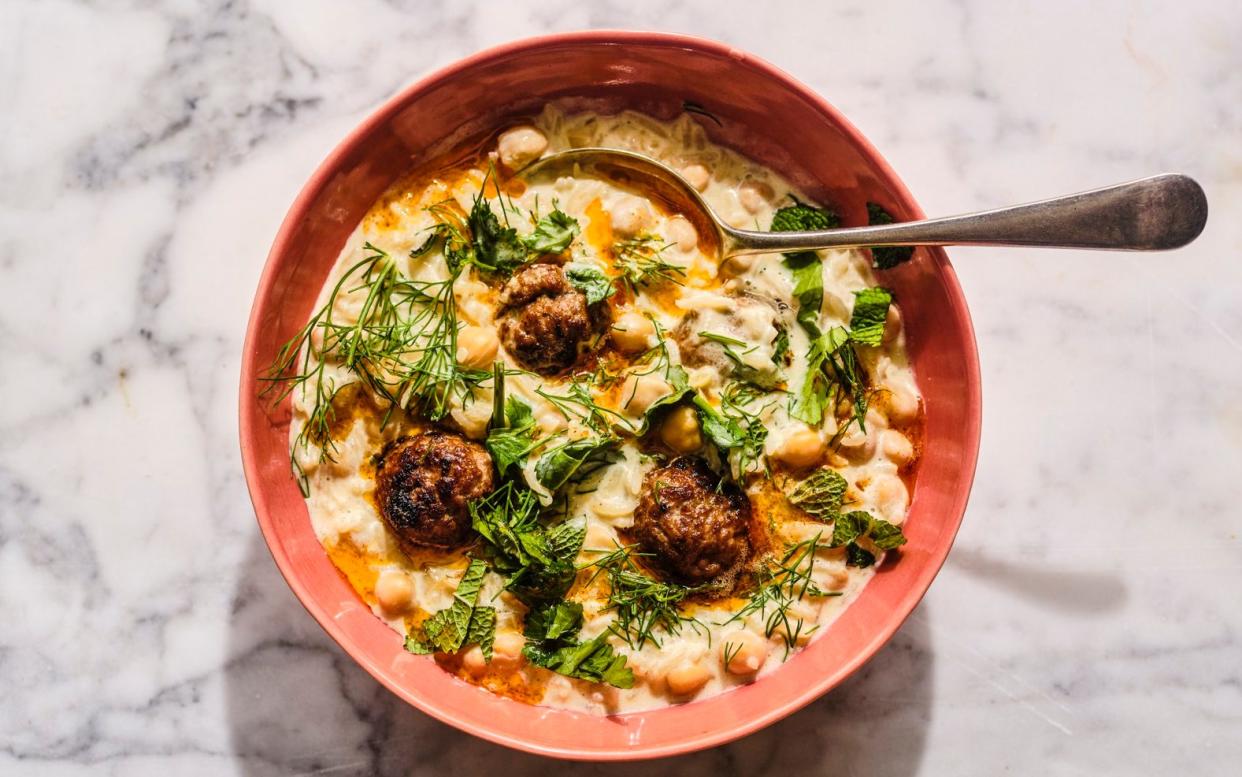Three easy, flavour-packed meatball recipes from around the world

Nobody buys mince because they love it. If you get it from the supermarket it lies like a furrowed mattress on its square of absorbent paper. ‘You’re dead meat,’ I think as I look at it. And yet minced lamb or beef goes into my trolley every week, mostly because it’s cheap, but also because you can do so much with it, travelling the world for flavours. I’ve been putting gochujang in pork meatballs lately, and want to make tender Italian veal and ricotta ones because spring is the perfect time to cook with ricotta as it’s soft and milky and young.
Cooking at its most basic is taking a raw ingredient and applying heat. This is what we did when we first began to cook. When we roast a joint of beef or a whole chicken for Sunday lunch, we’re still doing just that. But most cooking requires more effort. It’s about breaking foods down, then re-fashioning them.
Eggs are beaten and combined with butter, sugar and flour to make cake. Fruit is cooked until soft and mixed with sugar to make jam. Somewhere along the line we discovered that not every bit of an animal can take fierce heat, some of it needs to be cooked long and slow in liquid to become tender, and ‘lesser’ cuts can be finely chopped or ground. Everywhere we are breaking ingredients down to make something better – or at least more interesting – than the food we started with.
Meatballs don’t sound desirable, but I think it’s a matter of language. Koftas, albondigas, keftedes and polpette sound much better, especially Italian polpette. When I visualise them, I see light, energetic little dumplings that pirouette across my plate. Other cultures seem to be better at meatballs than we are.
In a Turkish restaurant recently, a friend ordered the meatballs (there was other great stuff on the menu, so I had rather grudgingly said, ‘OK then, get the meatballs’). When I tasted them – spiced so assertively that their interiors had a rust-coloured hue – I thought how brilliant humans are at this thing we call cooking. The mince had been pummelled so that the flavourings and seasonings were properly distributed, shaped into neat balls and fried so that they had a golden-brown crust.
British parents think of meatballs as an economical dish that can be thrown together on a Wednesday night. And that’s true, meatballs aren’t complicated, but you do have to factor in 30 minutes for them to chill, unless you want them to fall apart in the pan. My solution? Shape them the night before and stick them in the fridge; it’ll make life much easier.
I think of myself as an American-Italian mamma when I make meatballs with spaghetti and tomato sauce. I mix the meat with my hands, adding breadcrumbs and egg if they’re part of the recipe, willing every flavour to go deep into the meat. I fry a little chunk to taste whether the seasoning is right, then I form the balls with wet hands. I fry them over a medium-high heat – they need colour but too high a temperature can make them tough – and I don’t move them. You need to leave them to cook on one side, then carefully turn them over with a palette knife. Don’t shake the pan, unless you want trouble. They can also be baked in the oven, though that can make them dry.
Some meatballs are meant to be enjoyed as they are, stuffed into bread and anointed with hot chilli sauce, or served with a line-up of dips; others are finished in a sauce or poached in soup. Whichever you make, meat has been broken down and made into something better.
On doctor’s orders Diana Henry is taking a break from her column. We can’t wait to have her back in these pages, but in the meantime we hope you enjoy these previous favourites from her archive

